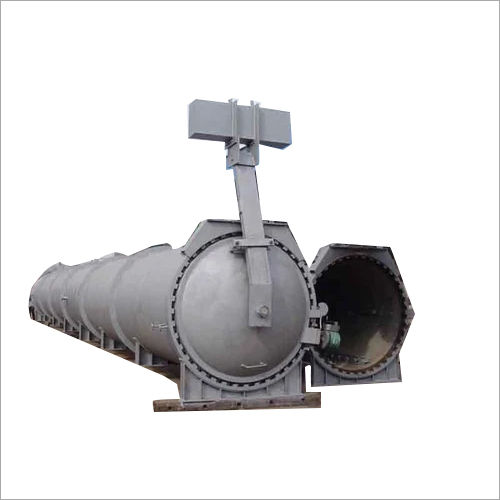Mild Steel Aac Autoclave
Product Details:
- Product Type Aac Autoclave
- Usage Industrial
- Material Mild Steel
- Chamber Thickness Different Available Millimeter (mm)
- Click to View more
Mild Steel Aac Autoclave Price And Quantity
- 1 Unit
- 100000 INR/Unit
Mild Steel Aac Autoclave Product Specifications
- Aac Autoclave
- Industrial
- Different Available Millimeter (mm)
- Mild Steel
Mild Steel Aac Autoclave Trade Information
- Cash Advance (CA)
- 10 Unit Per Month
- 30 Days
- All India
Product Description
AAC blocks are made using a specialised machine called a mild steel AAC (Autoclaved Aerated Concrete) autoclave. AAC blocks are a lightweight and adaptable building material. The autoclave is made to use the autoclaving process to cure and harden AAC blocks.
A mild steel AAC autoclave has the following important qualities and capabilities:
1. Construction: Mild steel, a long-lasting and reasonably priced material renowned for its strength and resilience to heat and pressure, is used to build the autoclave's main chamber. The high temperatures and pressures necessary for the autoclaving process are built into the autoclave's architecture.
2. The autoclave's regulated environment allows for the autoclaving of AAC blocks. The autoclave is filled with steam and the blocks before being sealed to provide a high-pressure, high-temperature environment. Through this procedure, the AAC blocks undergo a chemical reaction that causes them to harden and gain strength.
3. Heating and Cooling: To boost the temperature inside the chamber, the autoclave is outfitted with a heating system that commonly uses steam. For a predetermined amount of time, the temperature and pressure are maintained to aid in the curing process. The autoclave may additionally have a cooling system to progressively drop the temperature once curing is finished before the blocks are removed.
4. AAC autoclaves are built with safety features to safeguard operators and guarantee the equipment's safe functioning. Pressure relief valves, temperature and pressure sensors, safety interlocks, and emergency shut-off mechanisms are a few examples of these characteristics.
5. AAC autoclaves are offered in a range of sizes and capacities to handle diverse production volumes. The intended batch size and the dimensions of the AAC blocks being cured are used to calculate the autoclave's size.
6. Control systems are frequently used in autoclaves to track and modify variables including temperature, pressure, and curing time. These technologies guarantee exact control over the autoclaving procedure, producing AAC blocks that are reliable and of a high calibre.
7. Regular maintenance and inspection are necessary for the autoclave to operate at peak efficiency and last a long time. Inspections of the heating elements, insulation, and safety components, as well as the mild steel chamber, may be performed.
While mild steel is frequently employed for AAC autoclaves, other materials, such as stainless steel or specialised alloys, may also be utilised depending on certain needs. To choose the best mild steel AAC autoclave for your production needs and to guarantee compliance with pertinent safety and quality standards, it is advised to talk with a reliable manufacturer or supplier.
Other Details:
| Capacity | 500-1000 Blocks per hour |
| Material | Mild Steel |
| Automation Grade | Manual |
| Brick Material | Fly Ash |
| Method | STIM |
| I deal in | New Only |
| Usage/Application | Brick Making |

Price:
- 50
- 100
- 200
- 250
- 500
- 1000+
 |
DEVJOGI ENGINEERING
All Rights Reserved.(Terms of Use) Developed and Managed by Infocom Network Private Limited. |

 Send Inquiry
Send Inquiry

